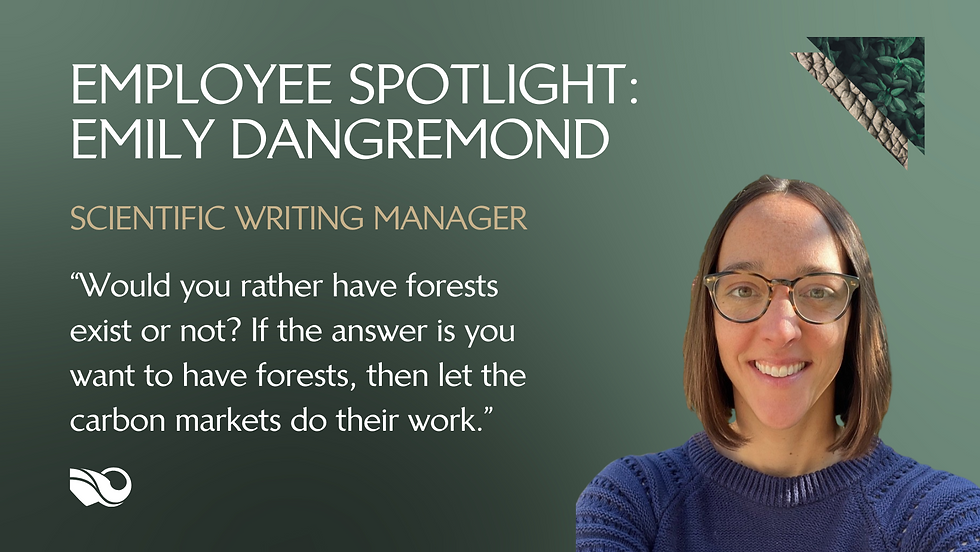Reasons for Wild Hope: July 2025
- Wildlife Works
- Jul 16
- 3 min read

Nature holds many secrets key to solving the climate crisis. This month, we’ve been reflecting on this seemingly simple truth: many things are so much more than they first appear. Take the humble sunflower. What appears at first to be one flower is actually the aggregate of hundreds of smaller flowers. This phenomenon, known in botany as inflorescence, is also key to successful climate solutions. What may appear at first as just a “carbon project” can actually be so much more. High quality REDD+ projects are wildlife conservation projects, food security programs, incubators for sustainable new jobs, and mechanisms to strengthen community land tenure and governance systems. Due to the interconnected nature of the climate crisis, we need to have interconnected, inflorescent solutions.
In this issue of Reasons for Wild Hope, learn about how REDD+ projects are strengthening resilience to floods, improving healthcare, and protecting endangered biodiversity, all by flipping the paradigm and making conservation profitable for local communities.

Rising Waters: Rising Resilience
For every 1°F of warming, the air can hold an extra 4% of moisture, increasing the possibility of heavier downpours that can result in flooding. In March 2025, severe floods hit villages in South Barito Indonesia, impacting communities involved in the Gerbang Barito REDD+ Project. The community used the project’s pre-investment funds to deliver medical care to 400+ people and food aid to 800 households.
An Opportunity to Save Lives
At the Kasigau Corridor REDD+ Project, consistent access to health care can be unreliable due to the rural nature of the project. Health care staff often can’t respond to emergencies in the middle of the night due to long travel times or fear of encountering wildlife. That’s why the construction of staff housing at the project’s health center is key for ensuring medical professionals can stay on-site, meaning faster care and safer outcomes for mothers, newborns, and emergency patients. This initiative shows that when carbon revenue meets community priorities, lives are saved.
Species Spotlight: A Forest Engineer
A century ago, there were an estimated 230,000 orangutans; around four times as many as there are today. Due to threats of deforestation and hunting, these gentle giants are considered critically endangered. The new Gerbang Barito REDD+ Project protects key habitat for these forest engineers, who build new nests for themselves and their young each night.
"I am an engineer, yes. But even engineers cannot build where there is nothing left.
So I speak to you, — not as a curiosity in your textbooks, not as a subject of your surveys, but as a fellow being. A builder. A thinker. A parent. An architect of the canopy.
If you see my nest, know that it is not just a bundle of leaves. It is proof that life still dares to continue here. That thought, skill, and memory live among the trees. That the forest is not empty."
Read this blog from the perspective of an orangutan and watch never-before seen camera trap footage of orangutans at the Gerbang Barito REDD+ project.
Employee Spotlight
Our global conservation work would not be possible without the dedication, expertise, and passion of our team members. Each month, get to know our team members and what they do through our Employee Spotlight Series.
In this month’s spotlight meet Emily Dangremond PhD, Wildlife Works Scientific Writing Manager. From conducting research on mangrove ecology to working in academia to writing her own children’s book on trees, Emily’s rich experience and passion for community-led forest conservation makes her an indispensable part of our team.
Learn more about Emily in this Q&A, and purchase her children’s book “Meet the Trees” here.







